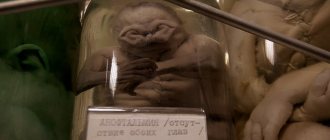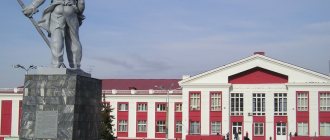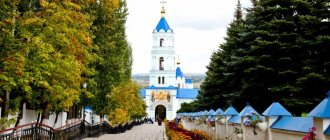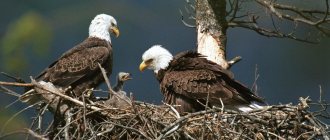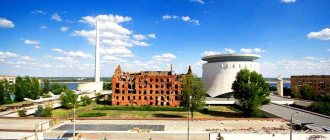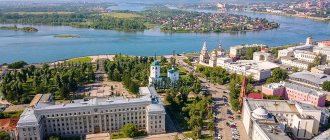- September 11, 2019
- Directions
- Molton
Kursk is one of the largest Russian cities. Where is Kursk? The city is located in the west of the European territory of Russia, 519 km from the Russian capital. This is one of the westernmost cities in the country. Kursk has a long history. It has been mentioned as a city since 1095. Now it is an important scientific, cultural, religious, educational, industrial and transport center.
The area of the city is 208 km2, and the height above sea level is 250 meters. Number of inhabitants: 448,733 people. The mayor of the city is V.N. Karamyshev.
Geography of Kursk
Many people are interested in the question: where is Kursk located, in what region? The city is located on a plain in the west of European Russia. This is the administrative center of the Kursk region. Time zone is Moscow. The climate in the city is largely determined by where Kursk is located. It is temperate continental, with an average January temperature of -6.2 °C, and July of +19.8 °C. This means that winters are relatively mild and summers are neither hot nor cold. The amount of precipitation is significant - 648 mm per year. The maximum occurs in June and July (71 and 78 mm, respectively). In the last decade, summers have become noticeably warmer, and annual temperatures have increased slightly. The amount of precipitation decreased slightly.kur
(POLEMICAL NOTES BY A LOCAL HISTORY)
author: N.V. Ryazanov
The chronology of cities is, as is known, from the time of their foundation or from the year of their first mention in a written source.
Kursk counted its years from the time of its first mention in the “Life of Theodosius of Pechersk” in 1032. Therefore, in 1982 it celebrated its 950th anniversary.
But 1032 is an unreliable date. It is not in the original texts of the Life of Theodosius; it was inserted into this work four centuries after it was written by the chronicler Nestor. Kursk is first mentioned in the Life of Theodosius in connection with the move of Theodosius’s parents to it shortly after the birth of their son. And the year 1032 is supposedly the time when Theodosius accepted monasticism in Kyiv, which does not correspond to historical facts.
This is stated in the official letter of the Institute of History of the USSR of the USSR Academy of Sciences dated February 25, 1982 (No. 14105-633, 1-2), which is published in this collection. It proposes to consider the year 1036 as the date of the first mention of Kursk in the Life of Theodosius. But this date is also arbitrary and does not reflect the time of the founding of the city (Theodosius’s parents came to the already well-developed city of Kursk).
Therefore, the chronology of the city of Kursk should be carried out from the time of its foundation, which can be established from written information and archaeological data (these materials are also published in this collection).
It is necessary to talk about the chronology of the city of Kursk for the following reasons. In February 1990, a New List of Historical Populated Places in Russia was approved in Moscow, which indicates that Kursk was founded in 1095. And in books published in Kursk (“Meeting with Kursk”, “Kursk Territory in the History of the Fatherland” and others), it is said that it was founded in 1032. Both dates contradict each other and are not true.
There is a number of written, toponymic and archaeological evidence that Kursk was founded earlier than the 9th century AD. We will indicate the most important of them.
1. In the “Geographical Dictionary of the Russian State” by A. M. Shchekatov, in its III part, published in 1804, the following is said about Kursk, in particular:
“When it began, the various changes to which it was subject destroyed the information. But it was reliably built by the Varangians, the primitive inhabitants of this country, and before they became tributaries to the great princes of Kyiv, that is, before the 9th century...”
2. Doctor of Historical Sciences, leading employee of the Institute of Archeology of the Russian Academy of Sciences V. P. Darkevich and the journal “Questions of History” No. 10 for 1994 reports the following:
“The powerful first wave of Slavic settlement from south to north led to the formation of Russian cities, which absorbed aboriginal multi-ethnic settlements with a predominance of Finnish and Baltic elements...
By the beginning of the 11th century. The Varangians who settled in Rus' are assimilated by the Slavs, adopting their way of life and elements of material culture, which is confirmed archaeologically...”
3. Kursk archaeologist Yu. A. Lipking in his publication “Burials of the third quarter of the 1st millennium AD. e. in the Kursk Poseimye" (collection "Early Medieval Antiquities", publishing house "Nauka", Leningrad, 1974) wrote:
“In the VI-VII centuries. V. on the banks of the Seim and Psla lived a population that left antiquities such as the Lebyazhinsky and Knyazhinsky burial grounds and numerous settlements corresponding to them. It is indisputable that it was a newcomer here, since its culture has nothing in common with the culture of the previous Chernyakhov population. The Lebyazhin tribes, who invaded the Kursk region, thoroughly established themselves in this territory. This is evidenced by numerous burials at burial grounds, many settlement sites...
What is the ethnic nature of this population? Most researchers consider it Slavic. Some archaeologists see Balts in him... "(In our opinion, this is the process of assimilation of the Balts by the Slavs, which V.P. Darkevich writes about).
Based on the article by V.P. Darkevich and the publication by Yu.A. Lipking, it can be assumed that the Varangian Kursk was also assimilated by the Slavs in the 6th-7th centuries AD. and became one of the centers of the tribal principality of the northerners (the distance between Kursk and the village of Lebyazhye is 20 km).
4. In the encyclopedia “Cities of Russia”, published in 1991, the following information about Kursk is given:
“Kursk as a city has existed probably since the 10th century. The oldest part of the city was located on hills separated by the valley of the Kur River (a tributary of the Tuskari). At that time, the Seversk land bordered the steppes, where Turkic tribes roamed. The Pechenegs, who traded with the Slavs, gave the name to the two rivers at the confluence of which the settlement was located: Kur, meaning “settlement,” “fence,” “city,” and Tuskar, “to set up a camp” (both words are of ancient Turkic origin). These names and archaeological finds indicate the existence of a Slavic fortified settlement here before the emergence of the city of Kursk.”
The Pechenegs roamed the southeast of Europe in the 9th-11th centuries. V. AD They named our two rivers after the fortified settlement that existed here before them. This means that Kursk arose earlier than the 9th century AD. e.
And “the time of the appearance of the first fortified settlement is usually considered the time of the emergence of the city,” stated Kursk historian and archaeologist, local historian and writer Yu. A. Lipking (“The Distant Past of the Nightingale Region,” Voronezh, 1971, pp. 96-97).
5. In the same book, Yu. A. Lipking wrote: “The time of the emergence of the first Slavic-Russian fortification on the site of our city is well confirmed by repeated finds on the cape of fragments of Slavic ceramics, including ceramics of types that existed only in the 8th-10th centuries.”
So…. a fortified Slavic-Russian village arose on the site of our city in the 8th century or at the beginning of the 9th century” (p. 101).
6. Another Kursk historian and archaeologist K.F. Sokol wrote to the Kurskaya Pravda newspaper on August 7, 1982:
“Slavic settlements have been known to us since the 8th century AD. It is possible that the Slavs settled our lands much earlier. However, settlements from this time have not yet been found.” (Yu. A. Lipking discovered two Slavic burial grounds of the 6th-7th centuries, but no settlements were found near them).
By the 8th century AD e. refers to a fortified settlement located at the confluence of the Kur River and Tuskar. It was a Slavic settlement that belonged to the Seversky tribes, who formed an extensive tribal union.
The formation of cities at that time was associated with the separation of crafts from agriculture, with the formation of settlements of artisans. In time, this coincides with the formation of classes and states. In 884, the Kiev prince Oleg defeated the Khazars and subjugated the Seversky lands to the power of Kyiv. Since the end of the 9th century, concern for the protection of Rus' from the raids of nomads has occupied an important place in the policy of the Kyiv princes. It is quite possible that Kursk will then acquire a special role as a fortress city.
The city was located on one of the branches of the Great Trade Route from the Varangians to the Greeks. The fact is that at one time Oka and Tuskar originated from Lake Samodurovskoye. And this made it possible to move from the northern river basin through Tuskar, Seim, Desna to the Dnieper and beyond. The favorable geographical position of Kursk made it a trading center. And the development of crafts led to the fact that Kursk was soon to become one of the trade, craft and administrative settlements of the Seversk land.”
As a commentary on the article by K.F. Sokol, it should be said that no settlements were found near the burial grounds discovered by Yu. A. Lipking because the territory in which they are located is covered with a large forest.
But there are other facts that confirm the words of K.F. Sokol that the Slavs may have settled our lands much earlier than the 8th century AD. e. The “Conclusion on the results of archaeological research of 1982-1992 of the city of Rylsk and its surroundings,” signed by the head of the Rylsk archaeological expedition M.V. Frolov, in particular states:
“According to exploration data from 1992-93, eight settlements of the Romny period are known in the vicinity of Rylsk, and some of them (as well as the settlement itself) exist on the substrate of the 5th-6th centuries. V.". It is significant that both at the settlement and at all these settlements life does not stop in the following centuries: they continue to live in the ancient Russian era and in the Middle Ages after the Mongol period...”
7. Doctor of Historical Sciences, senior researcher at the Institute of History of the Russian Academy of Sciences A. A. Gorsky in his article “Political centers of the Eastern Slavs and Kievan Rus: problems of evolution”, published in the journal “National History” No. 6 for 1993, writes:
“The evolution of the political centers of the Eastern Slavs went through two stages. The emergence of tribal principalities was accompanied by the appearance of “cities” - fortified settlements that became the centers of these formations. The subordination of the unions of tribal principalities to the power of the Kiev princes and the formation on their territories of volosts governed by representatives of the Kievan dynasty entailed the replacement of the centers of the unions of tribal principalities by new centers that served as a support for the power of the Rurikovichs and their squads... There are several cities of early medieval Rus' that had direct continuity with the centers tribal principalities:... Izborsk, Vitebsk, Volyn...". These, according to the information we have presented, also include Kursk and Rylsk.
The article by A. A. Gorsky gives a table of ancient Russian cities indicating the time of their founding and the time of liquidation of unions of tribal principalities on their territories. The time of the founding of Kursk is in question, and the time of the liquidation of the union of tribal principalities on its territory is said as follows: “The end of the 9th century. (northerners)." From this it follows that until the end of the 9th century AD. e. Kursk was a “city” and the center of the tribal principality of the northerners. Then the second stage in the evolution of the political centers of the Eastern Slavs began, including Kursk.
At the end of the 9th century, in 884, the Kiev prince Oleg defeated the Khazars and subjugated the Seversky lands to the power of Kyiv. The creation of new centers of power of the Rurikovichs began. The Tale of Bygone Years reports that Oleg decided to make Kyiv “the mother of Russian cities” and “began to build cities.” This also happened in Kursk.
The third book of the Great Encyclopedia, (volume XI), states that “the city of Kursk was founded by the Vyatichi in the 9th century.” The seventeenth volume of the “Encyclopedic Dictionary” of Brockhaus and Efron also says: “Kursk was built by the Vyatichi no later than the 9th century.” Kursk grew and developed quickly. By the beginning of the 11th century, it became a large city of Posemya and is mentioned in the list of the most significant cities of the Chernigov-Seversk land along with Chernigov and Lyubech (“Essays on the history of the USSR 9th-13th centuries,” M., ed. Academy of Sciences of the USSR. 1953. , p. 394).
The book “The History of the City of Kursk... Compiled in 1786 from various manuscripts, letters of the Royal and Patriarchal, and also from the handwritten chronicler located in the Kursk Znamensky Monastery,” published in Kursk in 1792 and stored in the State Archive of the Kursk Region, says : “During the reign of Grand Duke Vladimir in the Russian state, the city of Kursk, which received its name from the river flowing through it, called Kur, was in a flourishing state.” This is how we see Kursk in the “Life of Theodosius of Pechora”... Let us recall, by the way, that Theodosius in Kursk “studied all the grammars” of the divine books and became an outstanding figure in Kievan Rus. Unfortunately, the year 1032, inserted into the “Life of Theodosius” in the 15th century and serving as the starting point for the age of Kursk, is an unreliable date, as stated in the official letter of the Institute of History of the USSR Academy of Sciences dated February 25, 1982 No. 14105-633, 1-2 . We publish this letter as an appendix to this article.
So, the chronology of Kursk on Tuskari should be carried out from the time of its foundation. The first reliable date in the history of the Seversk land is the year 884, when the prophetic Oleg included the land of our northern ancestors into Kievan Rus and “began to build cities.” Let us recall once again the written evidence of the 19th century: “Kursk was founded by the Vyatichi in the 9th century” and “Kursk was built by the Vyatichi no later than the 9th century”!
APPLICATION
Letter to N.V. Ryazanov from the USSR Academy of Sciences (1982)
We are sending you a response to your letter dated January 20, 1982, prepared by junior researcher, candidate of historical sciences A.K. Zaitsev.
Deputy Director of the Institute of History of the USSR of the USSR Academy of Sciences V. I. Buganov.
Dear comrade Ryazanov N.V.!
Your doubts regarding 1032 as the date of the first mention of Kursk in written sources can and should be argued somewhat differently.
The date of the tonsure of the abbot of the Kiev-Pechersk Monastery Theodosius as a monk, accepted by local historians and some historians as the date of the first written news about Kursk, or rather its indirect mention (Pages of the history of the city of Kursk. 1981, pp. 9, 33); Anpilogov G. N. About the city of Kursk X-XVI centuries. — Bulletin of Moscow State University. Story. M., 1979, No. 5, p. 44-45) is contained in the so-called Cassian II edition of the Kiev-Pechersk Patericon, created in 1462 and which served as the basis for numerous subsequent revisions of the Patericon. In the early edition of the Patericon and most importantly in the Life of Theodosius, preserved in the parchment Assumption collection of the 12th-13th centuries. this date does not exist. It is a late insertion made as a result of calculations in order to reconcile the contradictory information from hagiographic and chronicle sources about the early history of the Pechersk Monastery (Uspensky collection of the 12th-13th centuries. Edition edited by S.I. Kotkov. M., 1971. p. 29; Shakhmatov A. A. Kiev-Pechersk Patericon St. Petersburg. 1897 pp. 10-33; Abramovich D. Kiev-Pechersk Patericon. Kiev-Pechersk Chronicle - News of the Department of Russian Language and Literature of the Academy of Sciences, 1897, vol. 2. book 3, pp. 807, 812-813, 826-827, 835-846; Abramovich D. I. Research on the Kiev-Pechersk Patericon as a historical and literary monument. St. Petersburg, 1902, pp. 74, 94). In addition, the unreliability of this date is confirmed by calculations of the chronology of events in the life of Theodosius. According to the most reasoned calculations of Academician A. A. Shakhmatov, Theodosius was tonsured a monk not in 1032, but on January 11, 1058 (Shakhmatov A. A. Research on the most ancient Russian chronicles, St. Petersburg, 1908, p. 434).
The data of the Ustyug chronicle cannot be taken into account, since they are contained in the late, 16th century. chronicle monument and contradict the evidence of the earliest and most authoritative chronicle monuments - the Laurentian and Ipatiev Chronicles.
The main thing is that Kursk in the Life of Theodosius is mentioned not in connection with his tonsure, but in connection with the transfer of Theodosius’ parents shortly after the birth of their son from Vasilyev (near Kiev) to Kursk. Considering that in 1024-1036. the Trans-Dnieper part of Rus' did not belong to the Kyiv prince Yaroslav the Wise (Yaroslav owned the right-bank part of the ancient Russian lands, his brother Mstislav had the left-bank part, the Dnieper served as the border), Theodosius’s father could have been transferred to Kursk no earlier than 1036 (Mstislav’s death, the transfer of his possessions to Yaroslav). Most likely, it was precisely in connection with the need to send the new princely administration to Mstislav’s former possessions that Yaroslav transferred Theodosius’ family to Kursk. Thus, the most acceptable date for the events in connection with which the city of Kursk was first mentioned would be 1036.
The archaeological dating of the emergence of Kursk is quite broad (second half of the 10th century), and it is necessary to take into account that the ancient Kursk fortification was not subjected to systematic study due to the significant damage to it by later construction (Anpilogov G.N. Decree cit., p. 46). The hypothesis about the construction of Kursk by Vladimir Svyatoslavich, expressed in a cautious form by G. N. Anpilogov, is not without probability, but cannot be considered proven. With the same degree of probability, we can, for example, assume that Kursk was founded during the time of Svyatoslav Igorevich as one of the outposts of the Old Russian state in the fight against the Khazar Khaganate.
Cities' anniversaries are celebrated based on the dates of their founding or first mention in written sources. Archaeological data usually cannot serve as a basis for determining the anniversaries of cities, since such data do not provide exact dates (with the exception of dendrochronological indications). Therefore, although Kursk existed somewhat earlier than its first mention in written monuments, its anniversary is determined by the date of the first mention, i.e. 1036. As for 1032, we can fully agree with your words: “it is better to correct a mistake than to aggravate it.”
Sincerely, Junior Research Fellow at the Institute of History of the USSR, USSR Academy of Sciences, Candidate of Historical Sciences A.K. Zaitsev.
Article from the collection “Kursk. Documents, Memoirs, Articles" Comp. A.Yu. Drugovskaya. Kursk, KSMU, 1997, 182 p.
Your comment:
Urban transport
Public transport in Kursk is quite diverse. There are buses, trolleybuses, trams and even electric buses running around the city. Transport of smaller capacity is represented by minibuses. During the year, urban transport transports up to 200 million people. Kursk trolleybuses have free Internet access.
The vast majority of city routes are bus routes. There are 125 of them. At the same time, there are only 5 tram routes, and 8 trolleybus routes. Gradually, minibuses are being replaced by larger units of transport equipment.
General characteristics
The width of the river ranges from 10 to 100 m. The average depth of the Seim is 2–3 m: in the lowlands it becomes deeper, and shallower on the rifts. The lower reaches are replete with pits. Their depth is 10–15 meters. Pools serve as reliable shelter for fish escaping the winter cold.
In summer, certain sections of the river become shallow and the Seim can be forded.
The bottom is loamy, sandstone is found in the upper reaches, and sandy loam soils are found in the lower reaches. The riverbed is winding, with frequent and sharp bends and bends. Water flows at a speed of 0.3 - 0.7 m/s.
The source is located within 178 m, and the mouth is 112 m above sea level.
The first ice appears on the Seimas in November or December. The beginning of ice drift is the first days of April. The flood continues for over 2 months. The river replenishes its supply by melting snow, and it is also fed by groundwater.
Reviews about Kursk
People are not very active in writing reviews about this city. Many speak negatively about the character of the local residents, considering this the main disadvantage of Kursk. There is also an insufficient number of parks and a reduction in green spaces. They write about salaries that they are low, there is a problem of unemployment, lack of rights for workers. The economic situation is said to be unfavorable. They write that without connections it is difficult to get a decent job, and that life is much better in other cities.
The advantages include good opportunities for growing crops and a large number of retail outlets. They also note that in general this city is no worse than other Russian cities.
Of course, reviews reflect the personal experiences of the authors and do not guarantee that others will necessarily encounter the same problems.
Pool
The total area of the basin is 27,500 km², most of which (20,350 km²) is located in the Kursk region. This is a flat river with wide eroded valleys, rich in chalk and limestone deposits.
The river bottom is uneven, the area itself is dissected by numerous beams and holes. The shores are not the same. The height of the right steep bank in some places reaches 40 m. The left bank is replete with terraces sloping towards the riverbed, its height barely exceeds 5–8 m.
We recommend reading: The Tavda River on the map from source to mouth
There are swamps in the lower reaches. They occupy more than 8% of the drainage area; closed lakes, channels, creeks and islands are often found here.
In total, there are at least a thousand lakes in the river basin, the largest of which are Lezvino, Malino, Makovye and Fitizh.
Recommended reading: rivers in Abkhazia.
Plants and animals
Flora
Meadow of gladioli in the Kursk region.
The Seim is a forest-steppe river with an open floodplain. The fields here are replaced by water meadows, reeds and willows grow on the banks. Forests occupy no more than 5–8% of the basin; they are mainly located on the left bank of the Seim and consist of floodplain black forest (elm, alder, ash, aspen, willow), oak forests, birch and pine groves.
The river abounds in plants, many of which are listed in the Red Book. The mirror surface of the Seim is decorated with a rare type of water lily - white.
In swampy meadows and in the lowlands one can find Siberian iris, swamp grass, marshmallow, bloody palmroot, and ovoid cache.
In the floodplain of the river there are cat's paws, flea thyme, and lush cloves.
Along the sands of the floodplain routes - grandiflora uniflora, unilateral ortilia, umbellate wintergreen, Russian juvenile, common heather.
In the forests of the basin there is five-leaved cathode.
Some of the plants form large populations, for example, thin swordweed (wild gladiolus): near the village of Karyzh in the Glushkovsky district there is a gladiolus meadow, which is a unique phenomenon and is under special protection.
The common orchis and the male orchis are endangered.
About 50 species of different mushrooms grow in the area of the Kursk Reservoir.
Fauna
The fauna is no less diverse and interesting. Roe deer, elk, wild boars and foxes are found in forests and fields. Beavers live in the river, as evidenced by dams and fallen trees with characteristic cuts.
You can see these animals in large numbers on Lake Lezvino, where a reserve has been created for them. Beavers often have nutria, otters and muskrats as their neighbors.
The shores abound with swallow and swift nests; here the birds have established huge colonies. Herons, storks, geese and ducks live in the floodplain.
The Seim is a habitat for 30 species of fish. Crayfish and mussels are found in the creeks.
Modernity
After the collapse of the Soviet Union, the severity of the transition period affected all Russian cities. Kursk was no exception either. In the 90s, many enterprises closed here, and there was a high level of unemployment.
In the 2000s, due to the general rise of the Russian economy, life gradually began to improve in this regional center. Industry, production, services and trade began to develop, which means new jobs appeared.
In 2012, the 980th anniversary of the city was solemnly celebrated. Currently, the head of Kursk is Olga Germanova. The city is divided into three districts: Seimsky, Zheleznodorozhny and Central. Today Kursk is a modern Russian regional center.
City in modern times
In 2022, Kursk celebrated its 985th anniversary. A tourist visiting this place for the first time will be amazed by the magnificent architecture, which accurately reflects how old the city of Kursk is.
Many architectural monuments are waiting their turn for reconstruction, thereby allowing them to preserve their original appearance. Along with ancient buildings, modern skyscrapers are being built. This contrast looks very interesting and unusual.
In universities, academies, and colleges, a special role is given to information technology. This makes it much easier for students to find and collect the information they need.
Instrument making, machine tool manufacturing, medicine manufacturing, etc. have developed greatly in the city.
Fishing and rafting
Seim is popular among fishing enthusiasts. After the end of spawning on the river, dozens and hundreds of people appear who want to sit on the bank with a fishing rod. Families come here; in the summer, tents and campfires appear near the Seim. The best time for fishing is June or July.
Perch, pike, and bream are caught using spinning rods and regular fishing rods. There are a lot of fish, chub and perch are hiding in the coastal reeds, and pike are lying in wait for their prey in the grass on the left bank. In the spring you can catch asp in the Seimas. This fish swims along with strong currents and melt waters from the Desna. After the water subsides, the asp returns to its native habitat.
Winter types of fishing are also in demand. They seriously prepare for ice fishing, stocking up on clothing and gear. In winter, the river freezes almost completely, but neither snow drifts nor blizzards stop experienced fishermen.
Kayaking is also popular. The tourist season begins in April and ends in November. All this time, continuous lines of kayaks stretch along the Seim. During the trip, many fish, sunbathe on the beach and visit attractions, the abundance of which is famous for the coastal cities and villages.
Popular message topics
- Spider Tarantula
In simple terms, a tarantula is a large spider that has poisonous glands. Tarantula belongs to the class of arthropods, but to the category of arachnids. The history of the tarantula and its name has not reached our days, - Portrait
A portrait is a pictorial reproduction of a human form, a group of people or animals. Portrait art originated in ancient times. The first portraits are visible in ancient Egyptian sculpture. - Cats Cats
are graceful and very beautiful. Animals have sharp claws, which help them climb trees with ease, and also jump deftly. The body of cats is mainly covered with hair, but there are also species of cats without hair. They have a long tail and ears.
Shipping
The Sejm has long been used for transporting people and goods. In the Middle Ages, the river was the only safe and fast way to travel. It connected the Dnieper, Volga and Don, allowing free trade with Byzantium, Volga Bulgaria, and the peoples on the shores of the Black and Caspian Seas.
We recommend reading: Kazanka River on the map of Tatarstan
The first shipping company was founded in Kursk by Governor A. N. Zubov. This happened in 1780. Barges loaded with products went to the Seim after the end of the icebreaker. Then the ships reached the Desna, from there they went to the Dnieper, and there they reached the Black Sea. In two months the barges reached the city of Kherson.
This waterway was used by a Nizhny Novgorod merchant named Gekov. He managed to navigate at least three barges loaded with grain and bread along the river. His journey was extremely difficult, because many merchants refused to use the river to transport goods.
In 1817, several more barges reached Kherson, with a total value of goods of 40 thousand rubles. The long journey was also not without incidents and losses. Barges capsized or became stuck in shallow water.
It was possible to eliminate the troubles associated with the winding banks of the river, shallow water and a large number of built mills only after the construction of a lock system in 1839.
The author of the project was M. A. Puzanov. He was considered the best hydraulic engineer. Thanks to his project, 60 piers and 17 locks were erected on the river. After their construction, the river became safer.
The waterway created by Puzanov was nicknamed Alexandria in honor of Empress Alexandra, the wife of Nicholas I. In 1843, 24 barges were carried along it.
In May 1846, the Lyudinovo steamship, which was the property of the merchant Maltsev, arrived in Kursk for the first time. The ship's captain found the lock system usable. But it existed only until the middle of the 19th century. By this time, the locks themselves had worn out, and shipping communications had become unprofitable.
During the Soviet period, the river was used to transport passengers. Motor ships of the Zarya type cruised around the Seim.
Nowadays, the river is navigable only in the lower reaches to the village of Verbovka, Chernihiv region; in other sections you can only see fishing boats of Seim residents and small boats used to transport tourists.
Recommended reading: the ancient name of the Volga.
Hydraulic structures
Kursk NPP.
On the Seimas there are dams and structures designed to generate energy: a hydrological post near the village of Mutin, a dam near Putivl, the Kursk Nuclear Power Plant.
The main hydrological post is located near the village of Mutin (Sumy region).
In 1976, the Kursk Nuclear Power Plant was erected at the Seimas; its coolant is the Kurchatov Reservoir. To do this, the river course had to be changed. The new artificial channel is located north of the old one and runs from the village of Sorokino to Makarovka, Kursk region.
Repeated attempts were made to build a system of locks on the river to regulate water levels and improve navigation; Thus, more than 10 dams were built on the Kursk-Tetkino section alone. Due to their gradual destruction, individual sections of the river near Putivl began to slowly become shallow.
To restore the water balance, in 1994 a project was developed for the construction of hydraulic structures at the Seimas. In 2010–2011 sandstone dams were built near Putivl, as a result of which water was redirected from the Lyubka River (the left branch of the Seim) along the main channel, which runs closer to the city.
Now this hydraulic structure has a significant impact on the speed of the river flow: 10 - 15 km before the dam, the flow slows down, the water loses transparency, after overcoming the obstacle, the speed increases, the channel becomes shallow, but the river becomes cleaner.
There are several small bridges across the river, including pontoon ones.
